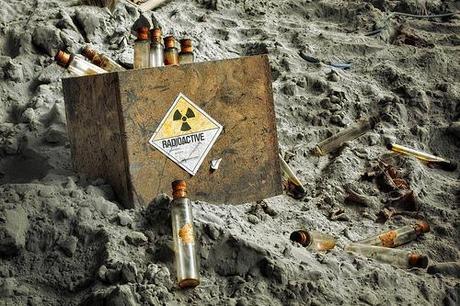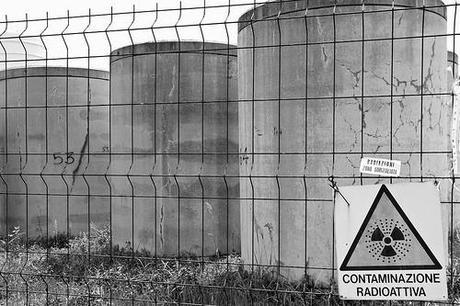What is Radioactive Waste?
Radioactive waste is nuclear fuel that is produced after being used inside of a nuclear reactor. Although it looks the same as it did before it went inside of the nuclear producer it has changed compounds and is nothing like the same. What is left is considered radioactive material and is very dangerous to anyone. This is very dangerous and remains this way for not just a few years but for thousands of years. It must be handled in the right manner so not to cause a ton of devastation in the world. It could take just seconds to die from exposure to radioactive materials. In short, radioactive waste is a kind of waste in gas, liquid or solid form that contain radioactive nuclear substance.

There are many industries like mining, defense, medicine, scientific research, nuclear power generation the produce by-products that include radioactive waste. The radioactive waste can remain radioactive for few months, years or even hundreds of years and the level of radioactivity can vary. The radioactive waste is extremely toxic as it can remain radioactive for so long and can cause acute radiation sickness when it first comes out of the reactor, if you stood within a few meters of it while it was unshielded.
According to Wikipedia, “Radioactive wastes are wastes that contain radioactive material. Radioactive wastes are usually by-products of nuclear power generation and other applications of nuclear fission or nuclear technology, such as research and medicine. Radioactive waste is hazardous to most forms of life and the environment, and is regulated by government agencies in order to protect human health and the environment.”
Those who work inside of these facilities must be trained extensively to protect themselves and the rest of the world. It is very dangerous, although some types of radioactive waste are considered to be more harmful than other types. Since it is so hazardous and toxic, finding suitable disposal sites for radioactive waste remains a tedious task. Therefore, safe disposal site is required to ensure safety of humans, animals and this environment from toxic gases.
Types of Radioactive Waste
According to the United States Nuclear Regulatory Commission more than 104 licensed nuclear facilities are located inside of the United States. These reactors total 20% of the energy consumption being used. There are five types of radioactive waste- high level, low level, intermediate level, mining and milling and transuranic waste. All types of nuclear wastes have their own separate storage and clean-up procedures.
High-level Waste
You will find that there are two types of nuclear reactors. These types are the pressurized and boiler water reactors. High-level nuclear waste, simply put, is spent fuel that is still present after it has been used inside of nuclear reactors. This radioactive waste has to cool off for several years and is considered to be very dangerous. The cooling process of this waste usually takes place inside of deep pools of water that are several hundred feet deep. These pools can be located on-site of off-site of the nuclear facility although the off-site facilities are limited and must be approved by the EPA .
This type of waste is hazardous to people for many reasons, but especially because it remains radioactive. High level waste accounts for 95% of the total radioactivity produced in the nuclear reactor. This type of nuclear waste is very dangerous. It must consistently go through a process to keep it cool and the radioactive material under control. High level waste can have short and long lived components depending upon the time it will take for the radioactivity to decrease to levels that is not considered harmful for humans and surrounding environment.

Intermediate-level Waste
Intermediate-level waste contains high amount of radioactivity than low-level and less than high-level. This type of waste typically requires shielding during handling and interim storage. This type of waste typically includes refurbishment waste, ion-exchange resins, chemical sludges and metal fuel cladding. The intermediate level waste contains 4% of all the radioactivity. Intermediate-level waste that requires long term management are transferred to an authorized waste management operator.
Low-level Waste
Most of the radioactive waste that is around today is considered to be low level. In fact, about 90% of all nuclear waste is low level. Nuclear reactors, hospitals, dental offices, and similar types of facilities often use low-level nuclear waste materials on a daily basis and it is needed in order to provide the services that are offered within these facilities. Low-level nuclear waste is not dangerous, and any of it can be disposed of inside of a landfill. This is the reason why it does not require shielding during handling and transport.
Even so there is a strict criterion in which it must be handled and disposed of. Without the proper disposal what is not dangerous has the possibilities of becoming that way. This is not a chance that you should be willing to take when it is so very easy to protect yourself. The low level waste contains just 1% of the radioactivity of all radioactive waste.
Mining and Milling
Tailings and waste rock are generates by mining and milling of uranium ore. The tailings material is covered with water and have the consistency of fine sand, when dried. It is produced by grinding the ore and the chemical concentration of uranium. After few months, the tailings material contains 75% of the radioactivity of the original ore.
Clean and mineralized waste rock is produced during mining activities which must be excavated to access to access uranium ore body. It has little or no concentration of uranium. While clean waste rock can be used for construction purposes mineralized waste rock could generate acid when left on the surfaced indefinitely that could affect surrounding environment.
Transuranic Waste
Transuranic waste, or TRU waste contains more than 3700 be per gram of elements. It is much heavier than uranium. This type of waste is produced through nuclear waste reprocessing procedures in most cases. This is one of the least worried about types of radioactive waste that is out there but it is worth mentioning since it is a part of nuclear waste.
Other Classifications
Non-commercial activities can bring nuclear waste to the forefront. There are several activities, including by-product materials and uranium mining, to name a few. The clean-up standards and procedures for these activities vary and are set forth by the Environmental Protection Agency.
Now you have the knowledge of radioactive waste and how it is disposed of in a safe manner.
References:
http://www.world-nuclear.org/info/Nuclear-Fuel-Cycle/Nuclear-Wastes/Radioactive-Waste-Management/

